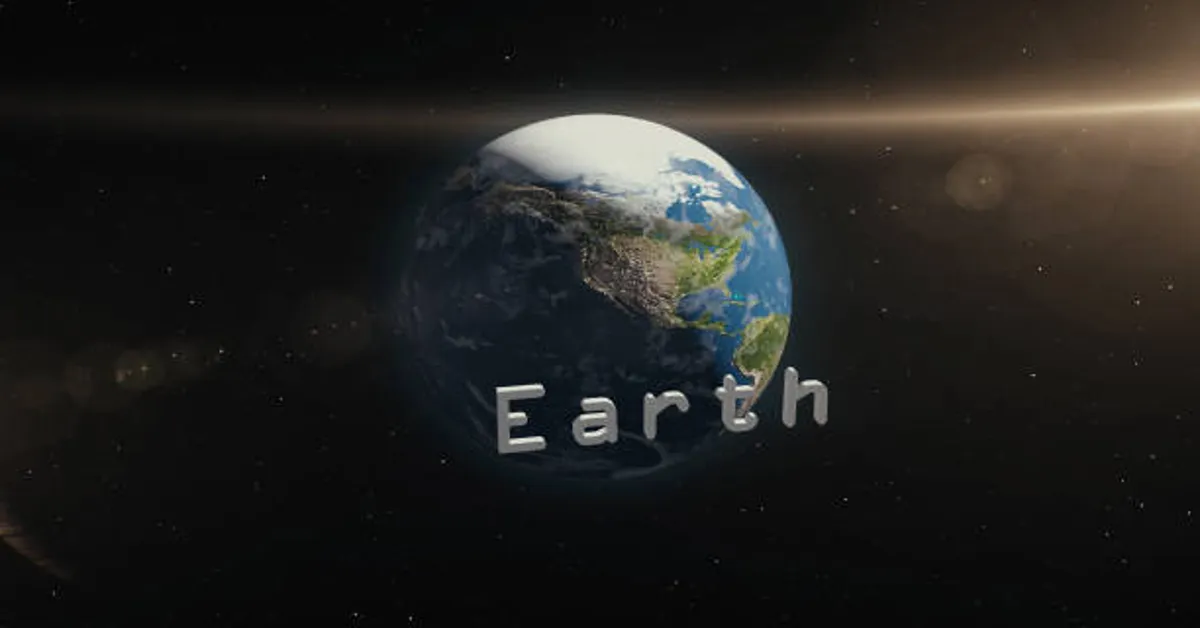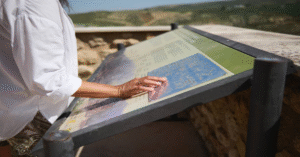The Edgenuity Earth and Space Science answers course is a comprehensive journey through the physical processes, cosmic phenomena, and geological dynamics that shape our planet and universe. It’s a subject designed to combine the awe of astronomy with the practical understanding of Earth’s systems, enabling students to see the interconnectedness of land, water, air, and space. Many learners taking this course often look for “Edgenuity Earth and Space Science answers,” but the key to success lies in truly understanding the concepts, not simply copying solutions. By mastering the ideas behind the questions, you’ll be able to handle quizzes, assignments, and even real-life science discussions with confidence.
This guide is designed to cover, in detail, the essential knowledge areas of the course. It will function as a knowledge bank for each topic, explaining the why and how behind the material so that you can work through the platform’s assessments independently. Think of it as a roadmap to not just “get answers,” but to know them.
1. Course Overview and Structure
Edgenuity’s Earth and Space Science course is typically divided into four main domains:
- Earth Systems and Resources – Focused on geology, water cycles, atmosphere, and natural resources.
- Weather and Climate – Examining meteorology, climate zones, global patterns, and climate change.
- Astronomy and the Universe – Studying celestial objects, space exploration, and cosmic phenomena.
- Earth’s History and Processes – Exploring geologic time, fossil records, and plate tectonics.
Within these units, lessons combine interactive modules, diagrams, animations, and practice questions. The goal is not only to memorize facts but to understand processes such as rock formation, planetary motion, or the mechanisms behind hurricanes.
2. Foundations of Earth Science
To excel in the course, it’s important to start with some fundamental principles.
The Scientific Method
Earth science relies on systematic investigation:
- Observation – Gathering information through the senses or tools.
- Hypothesis – Making an educated guess about a phenomenon.
- Experimentation – Testing the hypothesis under controlled conditions.
- Analysis – Interpreting results and identifying patterns.
- Conclusion – Deciding whether the hypothesis holds true.
Unlike in some disciplines, Earth science often deals with phenomena that cannot be recreated in a lab, like volcanic eruptions or planetary motion. This means scientists often rely on field studies, modeling, and historical data.
3. Earth’s Structure
The planet is composed of distinct layers, each with unique properties and roles.
| Layer | Composition | Thickness (Approx.) | Special Characteristics |
|---|---|---|---|
| Crust | Solid rock (continental & oceanic) | 5–70 km | Tectonic plates, site of life |
| Mantle | Semi-solid rock with convection | ~2,900 km | Drives plate movement |
| Outer Core | Liquid iron and nickel | ~2,200 km | Generates magnetic field |
| Inner Core | Solid iron and nickel | ~1,220 km | Extreme pressure, high temp |
Understanding the layered nature of Earth is critical for grasping plate tectonics, earthquakes, and volcanism.
4. Plate Tectonics and Geological Processes
The theory of plate tectonics explains how Earth’s lithosphere is divided into plates that move over the asthenosphere. This movement creates mountains, ocean trenches, and earthquakes.
Plate Boundaries:
- Divergent – Plates move apart (mid-ocean ridges).
- Convergent – Plates collide (subduction zones, mountain ranges).
- Transform – Plates slide past each other (San Andreas Fault).
Driving Mechanisms:
- Mantle convection
- Ridge push
- Slab pull
5. The Rock Cycle
Rocks transform between three main types:
- Igneous – Formed from cooled magma/lava.
- Sedimentary – Formed from compacted sediments.
- Metamorphic – Altered by heat and pressure.
Cycle Example:
Magma → Igneous rock → Weathering → Sediment → Sedimentary rock → Metamorphism → Metamorphic rock → Melting → Magma.
6. Earth’s Resources
Earth’s resources are divided into:
- Renewable – Sunlight, wind, water, biomass.
- Nonrenewable – Fossil fuels, minerals, metals.
Sustainable use involves balancing human needs with conservation practices to ensure resources are available for future generations.
7. Weather and Climate
Weather describes short-term atmospheric conditions; climate refers to long-term patterns.
Weather Elements:
- Temperature
- Humidity
- Wind speed and direction
- Precipitation
- Atmospheric pressure
Climate Influences:
- Latitude
- Ocean currents
- Altitude
- Vegetation
- Human activities
Climate Zones Table:
| Zone | Characteristics | Examples |
|---|---|---|
| Tropical | Warm year-round, high rainfall | Amazon Basin |
| Temperate | Four seasons | Eastern US |
| Polar | Cold year-round | Antarctica |
8. Severe Weather
Understanding severe weather is vital for safety and science:
- Thunderstorms – Result from warm, moist air rising quickly.
- Tornadoes – Rotating columns of air, often from supercells.
- Hurricanes – Large cyclonic storms fueled by warm ocean water.
- Blizzards – Heavy snow with strong winds.
9. Astronomy Fundamentals
Astronomy connects Earth science to the wider universe. It covers:
- Solar System – Sun, planets, moons, asteroids, comets.
- Stars – Life cycles from nebula to black hole.
- Galaxies – Massive collections of stars, gas, dust.
- Cosmology – Origin and evolution of the universe.
Planetary Comparison Table:
| Planet | Type | Moons | Notable Feature |
|---|---|---|---|
| Mercury | Terrestrial | 0 | Extreme temp variation |
| Venus | Terrestrial | 0 | Thick CO₂ atmosphere |
| Earth | Terrestrial | 1 | Supports life |
| Mars | Terrestrial | 2 | Largest volcano (Olympus Mons) |
| Jupiter | Gas giant | 79+ | Great Red Spot |
| Saturn | Gas giant | 80+ | Prominent rings |
| Uranus | Ice giant | 27 | Rotates on side |
| Neptune | Ice giant | 14 | Strongest winds |
10. Earth’s Place in Space
Earth’s tilt and orbit determine the seasons. The Moon’s gravity influences tides, while its phases depend on the relative positions of Earth, Moon, and Sun.
11. Space Exploration
Modern exploration Edgenuity Earth and Space Science answers includes:
- Satellites for weather and communication.
- Space telescopes like Hubble.
- Mars rovers exploring the Red Planet.
- Human missions to the Moon and ISS.
12. Geologic Time and Fossils
The geologic time scale divides Earth’s history into eons, eras, periods, and epochs.
| Eon | Major Events |
|---|---|
| Hadean | Earth forms |
| Archean | First life (microbial) |
| Proterozoic | Oxygen increases |
| Phanerozoic | Complex life evolves |
Fossils provide evidence for evolution and past climates.
13. How to Approach Edgenuity Questions
Instead of memorizing Edgenuity Earth and Space Science answers:
- Review lesson summaries and notes.
- Break down each question by identifying keywords.
- Connect the question to the related concept.
- Practice explaining the answer in your own words.
14. Ethical Learning
While it’s tempting to search for “Edgenuity Earth and Space Science answers,” using guides like this to actually learn ensures long-term benefits. In science, comprehension beats memorization every time.
ALSO READ: Improve Website Ranking with Garage2Global
FAQs
Q1: What topics are covered in Edgenuity Earth and Space Science answers?
A1: Topics include geology, plate tectonics, weather, climate, astronomy, Earth’s resources, and space exploration.
Q2: Can I get exact quiz answers here?
A2: No, this guide focuses on explanations so you can solve Edgenuity questions independently.
Q3: How do I study effectively for this course?
A3: Review concepts, use diagrams, take notes, and practice applying knowledge to different question formats.
Q4: Is Earth and Space Science hard?
A4: It can be challenging, but breaking it into sections and understanding each process makes it manageable.
Q5: Why is learning better than copying answers?
A5: Understanding concepts improves memory retention, critical thinking, and real-world application skills.









